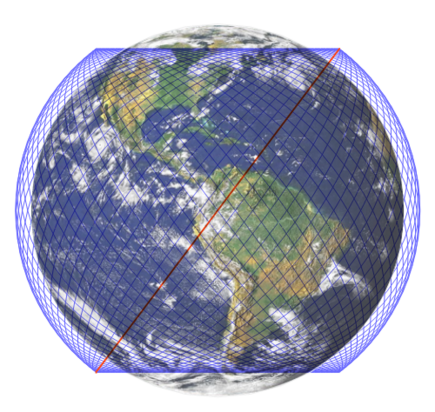You don't have the technology to do it in hours? How much would it be worth it to you to do it in hours?
It's a question of scale and amount. The atmosphere expands somewhat in the daytime and contracts at night. The upper reaches where all this takes place is rather diffuse. Probably a better vacuum than most high or collage laboratories can get. But it's still there in a diffuse form. it slows satellites over years and decades. Large reconnaissance satellites and little lose nuts and bolts, all of it.
The problem with trying such things at scale is that the solar wind exerts pressure on that gas. Some is inevitably blown away from the planet. Earth, like Mars loses it's air slowly with time. That is a function of both gravity, solar excitation, the solar wind, the magnetosphere and a few other concerns. It's slower for Earth because Earth is larger. It's why we have a Thicker atmosphere than Mars. In the time of the Dinosaurs, estimates are that the pressure was around a quarter greater than it is today. During the earlier coal era it was greater by fully a third.
The sun was slightly weaker in the past, but there is loss of atmosphere over time. It's rather slow. It takes tens of millions of years to really be able to measure it. Satellites though can and do detect the molecules blown off of Earth. It's true for Mars also.
The biggest losses come from volcanic eruptions, but asteroid collisions and solar flares also strip off substantial amounts of air and water as well over geologic time scales.
So yes, causing large bubbles of air to move upwards will degrade satellites in low orbits. But it's not really a good idea. The atmosphere is vast, but it is ultimately a limited resource. We shouldn't waste it.
Koestler Syndrome is a real possibility, but even with the full projected load of very low satellites from Space X, Kistler and One web up there, there will still be hundreds of miles between any two satellites most of the time. Close approaches still miss each other by fifty miles or more except on some rare occasions. There has only been one collision between two satellites that wasn't intentional. Much more for space junk, but then there are a few thousand satellites and several million bits of Space Junk.
Left alone, the junk load will slowly erode away. Gravity from the Earth does slow satellites below Geosynchronous Orbit slightly with time for that above even the low low pressures we are talking about here, and all the low orbiting junk will eventually fall to the ground. That above Geosynchrous Orbit will similarly over time be accelerated outwards, though that takes millions of years.
So you just have to be patient. Wait a few million years and the problem will be gone.





